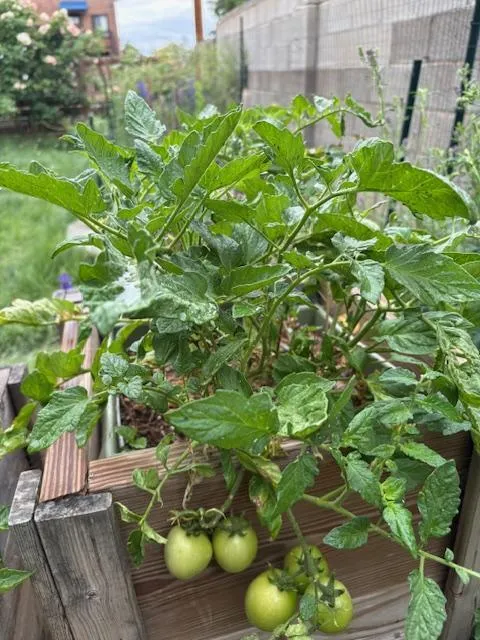
Container Gardening with Vegetables
Container Gardening with Vegetables: Grow Thriving Plants on Your Balcony or Patio
New Blog Post
Container Gardening with Vegetables: Grow Thriving Plants on Your Balcony or Patio
Getting Started with Vegetable Container Gardening
Top Vegetables for Container Gardening
Planting Techniques for Healthy Plants
Watering and Fertilizing Your Container Garden
What are the best vegetables to grow in containers?
How do I ensure proper drainage in my containers?
How often should I water my vegetable crops?
This container gardening with vegetables guide makes it easy to grow your own food in small spaces. It will show you how to start, choose containers, pick soil, and care for your plants for a thriving garden.
Key Takeaways
Container gardening is perfect for urban dwellers, providing fresh produce right outside your door, and offers control over the growing environment!
The right size containers with good drainage crucial for healthy plant growth—feel free to get creative with materials!
Proper watering, fertilizing, and pest management are essential for thriving container gardens, ensuring your plants stay healthy and productive all season long!
Getting Started with Vegetable Container Gardening

Container gardening is a game-changer for those with limited space, such as apartment dwellers or urban residents. Growing vegetables in containers allows you to enjoy fresh produce without a sprawling garden. Imagine stepping out onto your apartment balcony or patio and picking ripe tomatoes or crisp lettuce - it’s not only possible but also incredibly rewarding.
One of the biggest advantages of container gardening is the control it offers over the growing environment. Benefits include:
Avoiding issues like soil contamination
Ensuring that your plants get the right nutrients for healthy growth
Enabling you to move your plants to catch the best sunlight
Protecting plants from harsh weather, ensuring they thrive all season long.
Start by selecting suitable containers and plants for your growing edibles conditions. Identify a location that offers adequate sunlight and is accessible for regular care. With the right setup, you can create a container garden that provides fresh vegetables and herbs, transforming even the smallest space into a productive garden.
Choosing the Right Containers
Selecting the right containers is crucial for the success of your vegetable container garden. Important factors to consider include:
Size
Material
Drainage
Portability
Large storage tubs, for example, are ideal for growing large plants like tomatoes and are more economical compared to purchasing large containers from garden centers.
Portability is another important consideration; containers can be moved to maximize sunlight exposure or protect plants from adverse weather. Grow bags and other cost-effective options can also be used, making container gardening accessible for everyone. Selecting the right containers ensures your plants have the best chance to thrive.
Best Materials for Containers
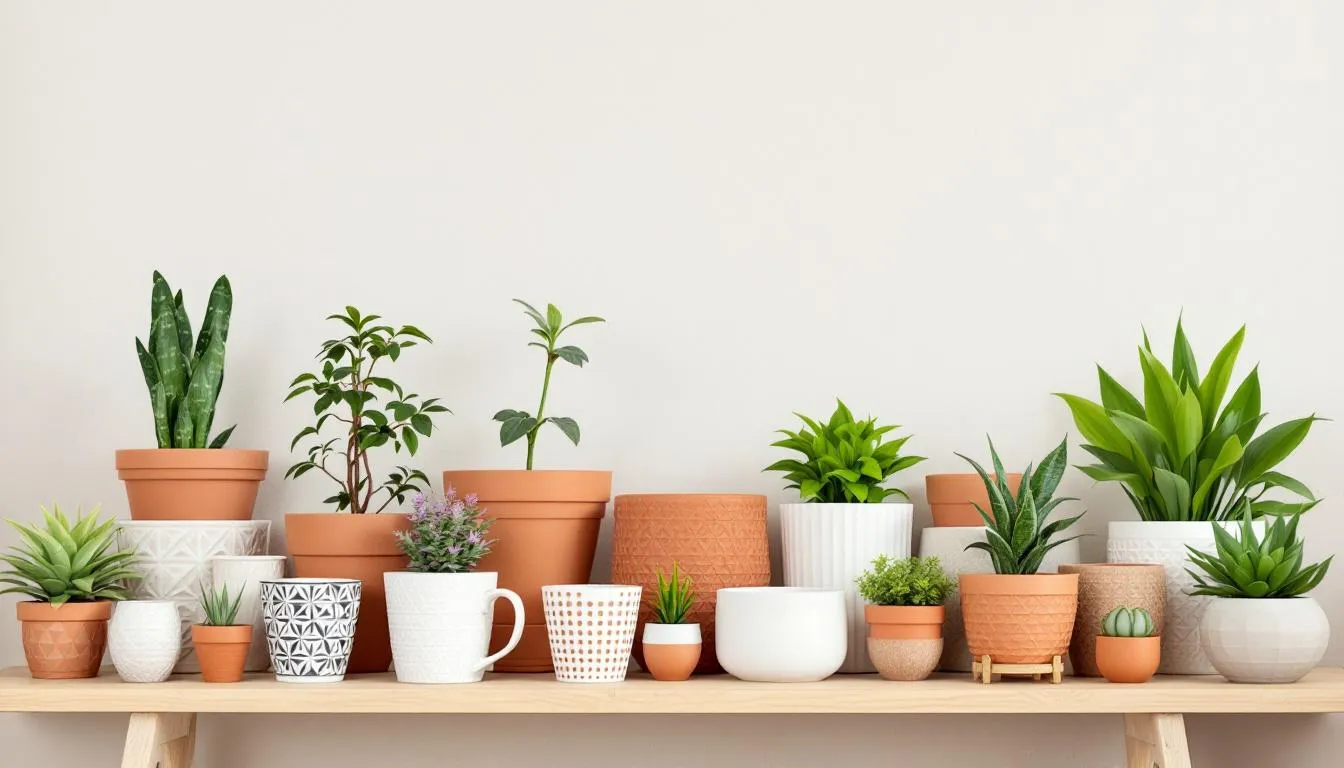
The material of your containers can significantly impact the health of your potted plants. Plastic pots are lightweight and affordable, making them a popular choice for many gardeners. However, they may not be as visually appealing as other materials.
Clay pots, on the other hand, are porous, allowing air and moisture to circulate, which benefits plant roots. Keep in mind that clay pots can be heavy and breakable, so they might not be suitable for all situations.
Wood, metal, and composite materials also offer unique aesthetics and functionality. Wooden containers provide good insulation but may require maintenance to prevent rot. Metal containers can heat up quickly, which might pose a risk to sensitive plant roots if not monitored.
Reusing buckets and other containers tas planters can be an eco-friendly and economical option for your container garden.
Container Size and Drainage
Proper drainage is essential in container gardening to prevent root rot and ensure healthy plant growth. Water-logged soil can promote bacterial and fungal growth, stunting plant productivity or even killing them. This is why ensuring that your containers have sufficient drainage holes is critical to avoid too much moisture.
The size of your container also matters. Shallow roots plants like lettuce or greens can thrive in smaller containers, while larger plants like tomatoes require more space. Adding pebbles to the bottom of your pots can improve moisture retention and drainage, providing stability in windy conditions.
If you’re using large storage tubs, don’t forget to drill drainage holes to manage excess water. Placing saucers under your pots can help avoid damage to patio or balcony surfaces, making your container garden both functional and aesthetically pleasing.
Selecting the Best Soil Mix
A good potting soil is key to the success of your container plants. It should be light, well-draining, and capable of retaining adequate moisture for plant roots. If you are purchasing potting soil, make sure it is a lightweight mixture, especially if you are growing vegetables on a balcony or rooftop The structural integrity of the mix is crucial, as it needs to remain stable through multiple growing seasons. Perlite and vermiculite are often added to potting mixes to improve aeration and moisture retention, respectively.
Potting mixes can be tailored to specific vegetables, balancing water retention, drainage, and nutrients. Too much peat moss can compact and restrict root growth, so balance it with other components. Adding sphagnum moss, compost, or vermi-compost can also enhance the nutrient profile of your potting soil mix, ensuring healthy root growth and robust vegetables . If you want to mix your own soil, a mix of equal parts vermiculite, peat moss(sphagnum moss) and perlite with on third as much compost is a good mix.
Top Vegetables for Container Gardening
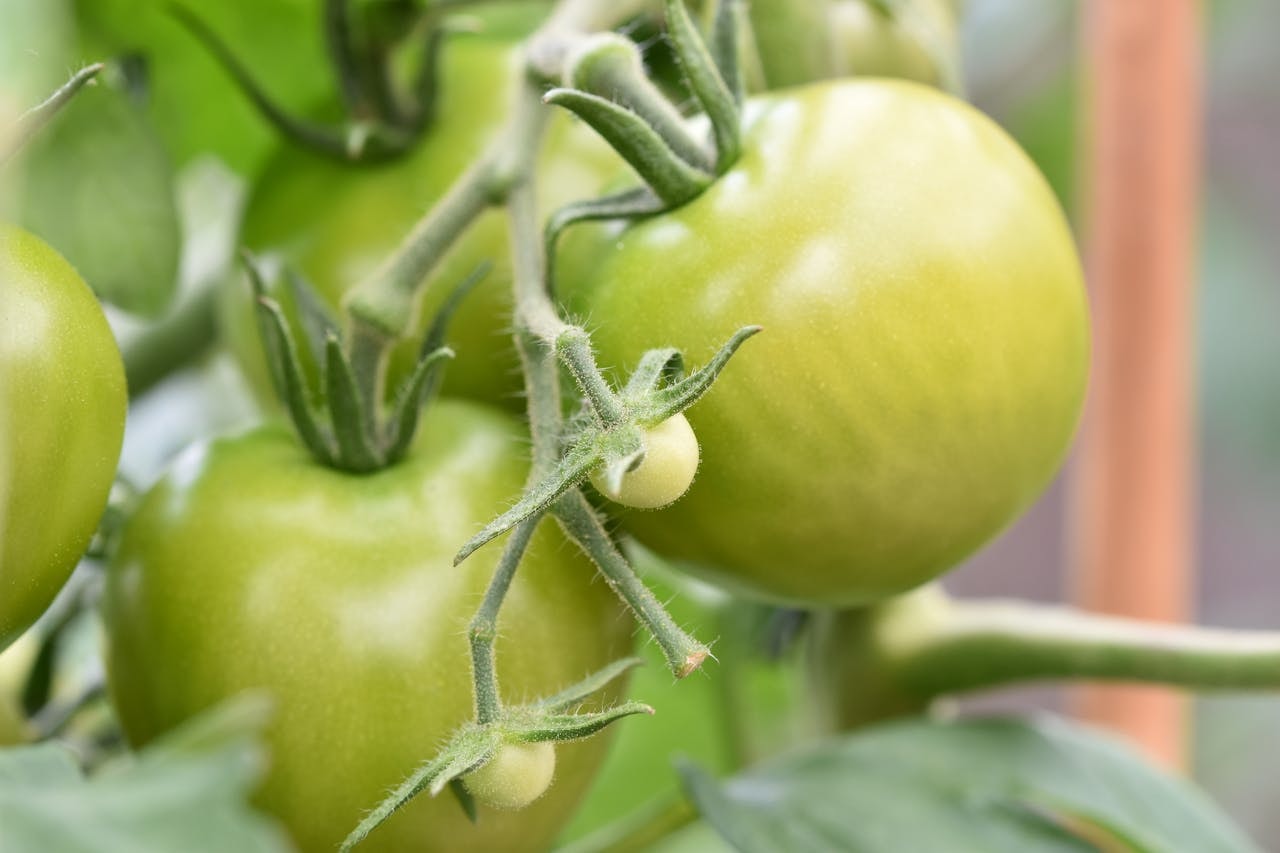
Many vegetables thrive in containers, making them a versatile choice for small spaces. Some of the best vegetables for container gardening include:
Tomatoes
Peppers
Eggplants
Carrots
Radishes
Beets
Spinach
Kale
Lettuce
Dwarf or compact varieties of these vegetables are ideal as they adapt better to space limitations.
Choosing the right container size is essential to prevent vegetable plants from becoming root-bound, which is crucial for healthy growth. Larger containers are needed for vegetables like tomatoes, peppers and eggplant while small containers can be used for radishes, beets, spinach and lettuce.
With the proper care and attention, your container garden can flourish, providing fresh produce throughout the growing season.
Fruiting Vegetables
Fruiting vegetables like tomatoes, bell peppers, and eggplants, including cherry tomatoes, are excellent choices for container gardening. Compact ‘determinate’ or ‘bush’ tomato varieties are recommended as they stay smaller and are more manageable.
Sweet and hot pepper plants thrive in warm, sunny spots, making them perfect for containers. Do not let the containers dry out. Pepper plants are very sensitive to wilting.
Eggplants prefer warm conditions and sunny locations, making them suitable for container gardening. Unique varieties such as red white or striped can also add aesthetic appeal to your container garden. Ensure these plants receive plenty of sunlight and are watered regularly for optimal growth.
Bush beans can also be grownin containers. Bush beans produce their beans over a short period of time compared to pole beans. When they are finished producing you can replace them with a fall crop of kale or other greens.
Root Vegetables
Root vegetables such as carrots, radishes, and beets thrive in containers, making them ideal for home gardening. Carrots grow well in containers that are 10-12 inches deep to accommodate their root length. Beets are also suitable for vegetable container gardening, and both their roots and leaves are edible.
Radishes can be easily grown in containers,and are one of the fastest vegetables to produce. They are not only nutritious but also relatively easy to grow, making them a great choice for beginner gardeners.
Leafy Greens
Leafy greens like Swiss chard, kale, and lettuce are excellent choices for container gardening due to their compact growth and versatility. These vegetables typically require at least 4 hours of sunlight daily to thrive, making them ideal for vegetable gardening. Lettuce and spinach can be grownin smaller pots or window boxes.
Both kale and lettuce can be grown indoors, especially quick-growing varieties, making them suitable for limited spaces. Kale offers ornamental properties with various colors and can withstand colder temperatures, making it a favored choice.
Microgreens and baby greens can be produced in as little as 3 weeks, providing a quick and nutritious addition to your meals.
Planting Techniques for Healthy Plants
One of the most important gardening tasks is proper palnting. Group compatible plants together to enhance growth and maximize space. For example, pole beans can be planted with radishes and lettuce, while tomatoes pair well with basil and onions. This method not only saves space but also promotes healthy plant growth.
When setting out vegetables in containers, remove them from the pot or cell they came in and examine the rootball. If the roots are wound tightly around the bottom of the container, loosen them and spread them out a little so that they will grow into the soil of the container. Most vegetables will be rootbound when they come from the store and loosening or even removing the circling roots at the bottom of the container will give those roots a healthy start and c=encourage new growth.
To optimize container planting:
Fill containers with soil mixture to within 1 to 2 inches of the top.
Dig a hole so that yu can plant your vegetables so that the rootball is completely in the soil.
Most vegetables can be planted from seed. Except for lettuce, the seed shouel be covered with about a quarter inch of soil. Lettuce seed needs light to germinate, so press it into the surface of the soil.
Use a layering technique for crops like potatoes, starting with the pot half full and adding more soil as growth occurs.
Regularly feed your container plants with fertilizers to replenish nutrients and ensure steady growth. Compost or compost tea is a good organic fertilizer.
Companion Planting
Companion planting can enhance garden vitality and resilience by pairing plants that support each other’s growth. For instance, tomatoes grow well with carrots, onions, basil, and marigolds, while lettuce thrives alongside onions, cucumbers, carrots, and radishes. Flowers can also be used as companion plants to keep pests away and attract pollinators and beneficial insects. Marigolds, petunias andnasturtiums are among the best companion flowers.
Carefully selecting companion plants creates a more productive and harmonious container garden, especially when incorporating a few plants. This practice not only improves plant health but also maximizes the use of limited space.
Vertical Gardening
Vertical gardening is an excellent technique for maximizing space in container gardens. Supports that can be used to support tall or climbing vegetables like pole beans and cucumbers include:
Trellises
Stakes
Netting
Twine
Cages
Supports should be placed at the time of planting to avoid damaging roots and start training the plants up the supports right away.
Tiered planters are another great option, as they help all the most plants get enough sunlight, enhancing growth and spacing in limited areas. Utilizing vertical gardening techniques helps create a lush and productive garden, even in small spaces.
Watering and Fertilizing Your Container Garden
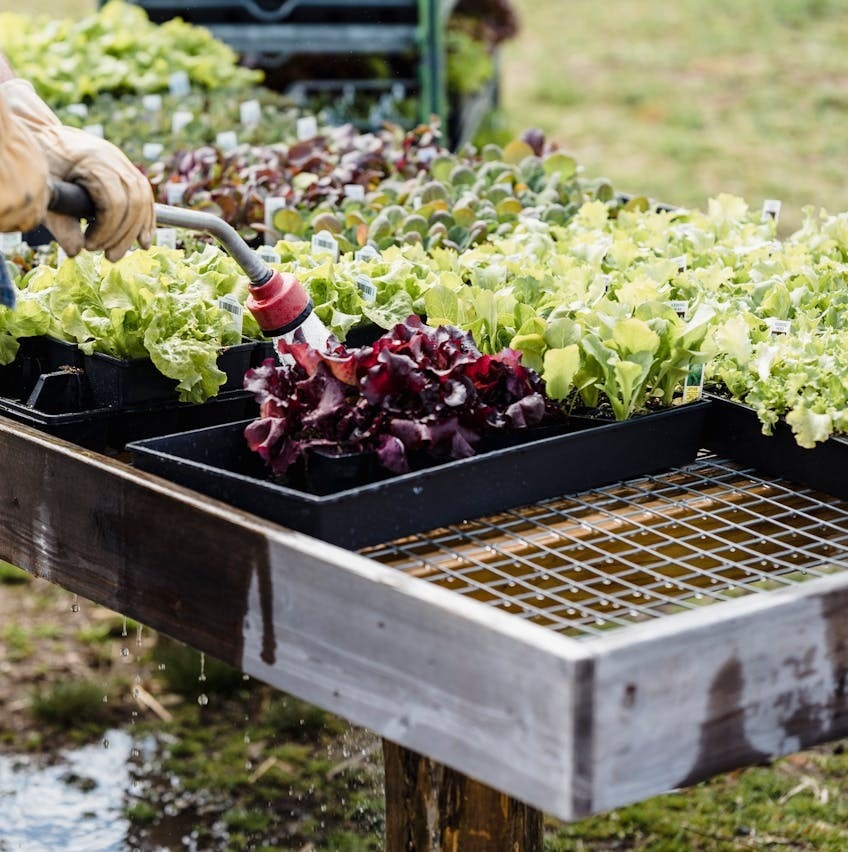
Proper watering and fertilizing are essential for maintaining vegetables in containers. Here are some tips to help:
Use saucers to protect surfaces and hold extra water for plants, though they are not strictly necessary for all plants.
Apply mulching to reduce water requirements.
Create windbreaks to further reduce water needs.
During active growth, vegetables should be fed with liquid fertilizer at least twice a month. Here are some fertilization guidelines:
Use an all-purpose fertilizer or compst for starting container plants.
Regular fertilization replenishes nutrients that may be leached out by frequent watering.
This ensures steady growth and healthy plants.
Effective Watering Methods
The best time to water growing vegetables is early in the morning when the temperature is cooler, reducing water evaporation. Check if the top 1 inch of soil has dried out during high heat days, and water accordingly. Ollas, unglazed clay pots buried in the soil, can provide slow moisture release to plant roots, enhancing water efficiency.
During the hottest days of summer, plants in pots may require watering up to twice a day. If container plants are drying out too quickly, group them together and create shade to reduce water loss. Adopting these watering methods ensures your container plants remain healthy and hydrated.
Choosing the Right Fertilizer
Selecting the right fertilizer is vital for the healthy growth of your container plants. At the start of the gardening season, using a balanced, general vegetable slow release fertilizer is advisable. This ensures that your plants receive a steady supply of nutrients over time. Good organic amendments include liquid seaweed, fish emulsion, or manure tea, which can enhance the nutrient profile of your garden soil.
For plants grown longer than eight to ten weeks, water-soluble fertilizer should be applied every two to three weeks. This helps replenish nutrients that may be leached out by frequent watering. However, it’s important to avoid over-fertilizing, as this can harm your plants.
Regular fertilization, combined with occasional doses of fish emulsion or compost, can add trace elements to the soil, promoting healthy, robust plants.
Managing Pests and Diseases
Managing pests and diseases is crucial to maintaining healthy vegetable crops. Using organic pesticides like neem oil can effectively control pests without harming the ecosystem. Introducing beneficial insects, such as ladybugs, can help manage pest populations naturally, reducing the need for chemical interventions.
Preventative measures are also essential:
Quarantining new plants for a short time can prevent the spread of pests to existing plants.
Certain herbs and flowers can deter pests, attract beneficial insects, and improve the flavor of nearby vegetables.
Cleaning containers and tools before planting helps minimize the risk of disease or pest infestations, ensuring your container garden remains healthy and productive.
Creative Container Ideas
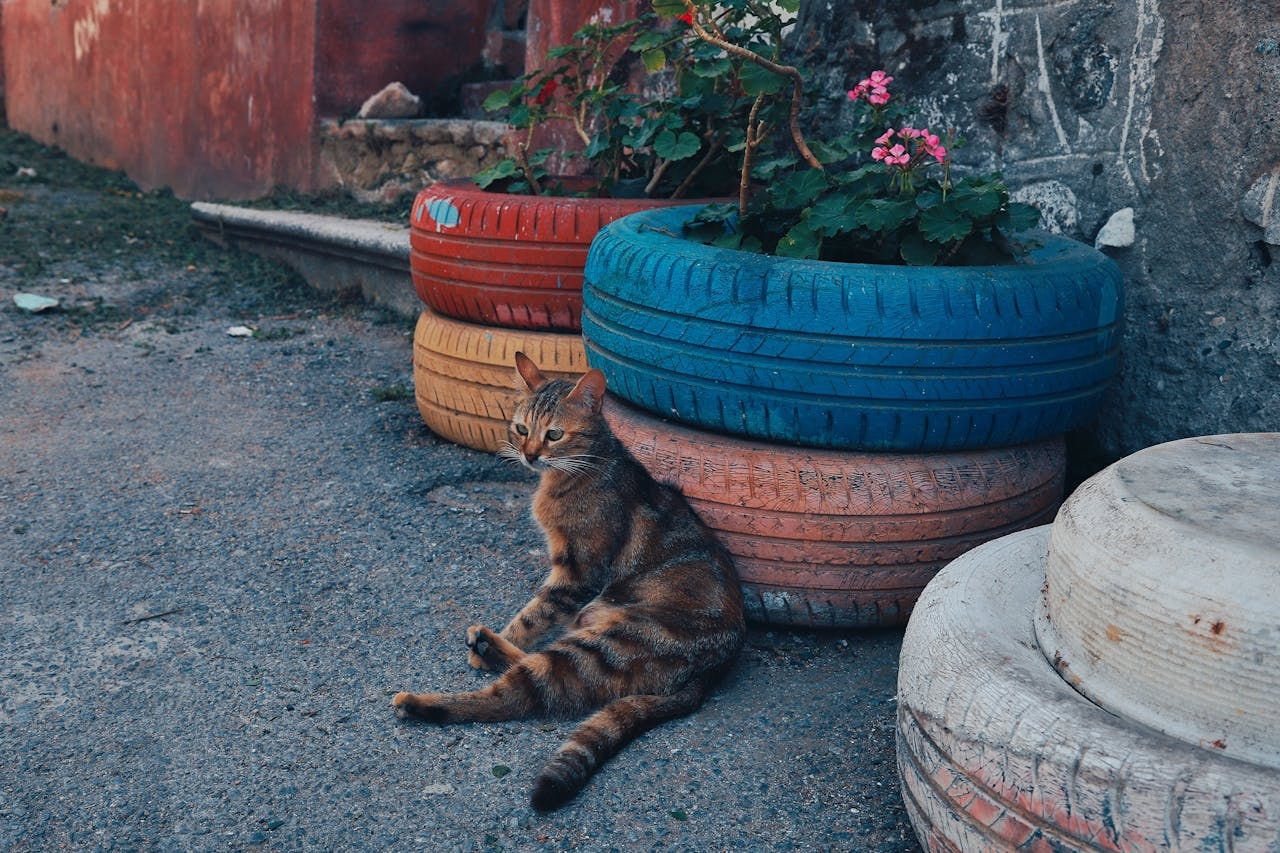
Container gardening offers endless opportunities for creativity. Repurposed items can serve as charming planters or displays, such as:
Old watering cans
Wheelbarrows
Galvanized tub
Thrifted wooden cutting boards transformed into unique wall-mounted displays, perfect for small spaces.
Vertical gardening can significantly enhance the aesthetic appeal of small spaces through the use of walls, fences, and garden arches
Stackable planters that maximize space, ideal for small areas while showcasing various plants.
Adding colorful pollinator flowers such as zinnias, petunias, and butterfly weed alongside your vegetables tocan enhance the beauty and productivity of your container garden
Indoor Container Gardening
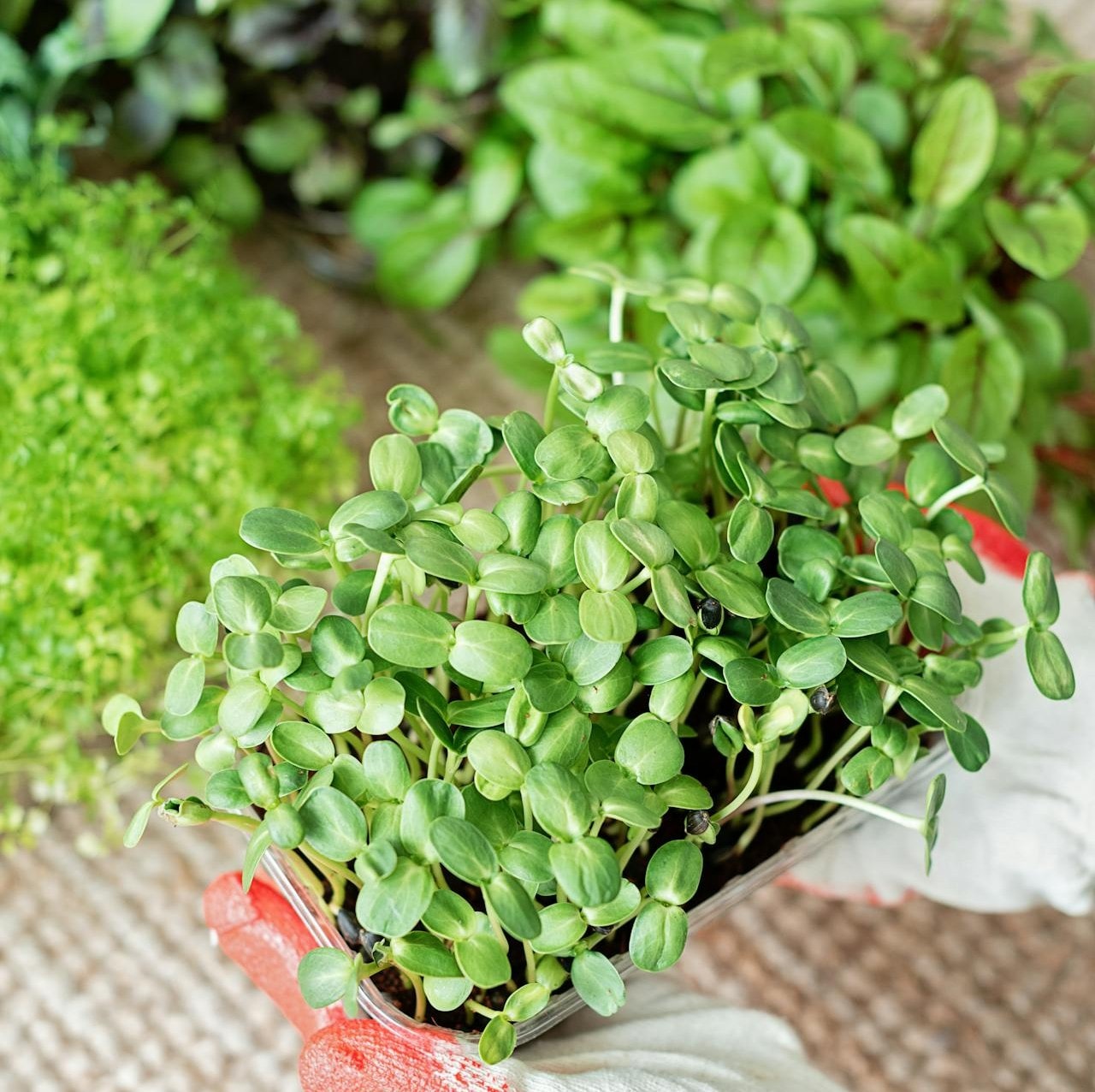
Indoor container gardening allows you to grow vegetables and herbs year-round, regardless of the weather outside. Fruiting vegetables like small-fruited tomatoes and peppers, as well as several types of lettuce, radishes, and many herbs, are suitable for an indoor garden. These plants require a sunny, south-facing window, with supplemental light needed during winter to ensure healthy growth.
Indoor plants tend to dry out less quickly and require less fertilizer compared to outdoor plants. Adjusting light and water requirements is crucial for indoor gardening success.
Malabar spinach, a heat-loving vine, performs well in containers and is great for vertical gardening, making it an excellent choice for indoor spaces. With the right care and attention, your indoor container garden can thrive, providing fresh produce throughout the year.
Summary
Container gardening is a versatile and rewarding way to grow your own vegetables, even in limited spaces. By selecting the right containers, soil mix, and plants, and by applying effective planting, watering, and fertilizing techniques, you can create a thriving container garden. Managing pests and diseases, along with incorporating creative and indoor gardening ideas, further enhances your gardening experience.
In conclusion, container gardening offers a practical solution for fresh, home-grown produce all year round. Whether you’re a beginner or an experienced gardener, the tips and techniques shared in this guide will help you achieve a flourishing container garden. So grab your containers, get planting, and enjoy the fruits of your labor!
Frequently Asked Questions
What are the best vegetables to grow in containers?
Growing tomatoes, peppers, and leafy greens like spinach and kale in containers is a fantastic way to maximize your gardening space! Opt for dwarf varieties for the best results, and watch your mini garden thrive!
How do I ensure proper drainage in my containers?
To ensure proper drainage in your containers, make sure they have at least 1/4 inch drainage holes and consider adding pebbles at the bottom to boost both moisture retention and drainage. This simple trick will keep your plants happy and healthy!
How often should I water my vegetable crops?
You should water your vegetables early in the morning. Check the top inch of soil; in hot weather, you might need to water them twice a day! Keeping them hydrated will help them thrive!
What type of fertilizer should I use for container plants?
Go for a balanced, slow-release fertilizer to kick things off, and then switch to a water-soluble option every few weeks! Your plants will thrive, and you'll see amazing growth!
How can I manage pests in my container garden?
You can effectively manage pests in your container garden by using organic pesticides like neem oil and welcoming beneficial insects like ladybugs! Don't forget to quarantine new plants and incorporate pest-deterring herbs and flowers for an extra layer of protection!
